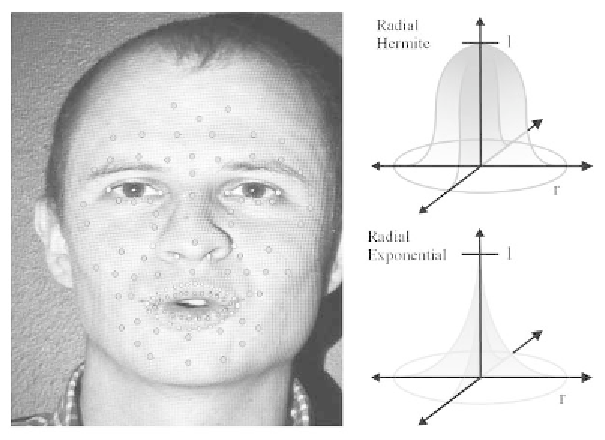Game Development Reference
In-Depth Information
Figure 6. In the morphing step, two types of Radial Basis Functions are
applied. (1) The hermite type is shown in the top-right part of the figure and
is applied to all dark grey points on the face. (2) The exponential type is
shown in the bottom-right part and is applied to the light grey points.
log(
b
) / log( 0.5)
h
=−
1
x
(3)
b
≈
5
1
3
2
h
=−+
231
x
x
(4)
2
Figure 6 shows these two functions.
The first type is an exponential function yielding weights that decrease rapidly
when moving away from the vertex, whereas the second type — a hermite basis
function — shows more like a plateau in its neighborhood. The exponential type
is used at vertices with high curvature, limiting the spatial extent of their
influence, whereas the hermite type is used for vertices in a region of low surface
curvature, where the influence of the vertex should reach out quite far. The
vertices indicated in bright grey on the face are given exponential functions, the
dark grey ones hermite functions. Figure 7 illustrates the result of changing a
point on the forehead from exponential to hermite. The smaller influence region
results in a dip.

Search WWH ::

Custom Search